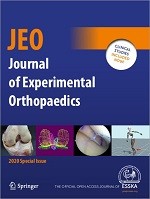
No Clinical Advantage of Sublingual Sufentanil vs Oral Oxycodone for Pain Management After TKA

No Clinical Advantage of Sublingual Sufentanil vs Oral Oxycodone for Pain Management After TKA
Sufentanil sublingual tablet system versus oral oxycodone for management of postoperative pain in enhanced recovery after surgery pathway for total knee arthroplasty: a randomized controlled study.
J Exp Orthop. 2020 Dec; 7: 92.Synopsis
Seventy-two patients scheduled for a unilateral total knee arthroplasty were randomized to receive a sublingual sufentanil tablet system (15mcg) or oral oxycodone for post-operative pain management, in addition to a standardized multimodal analgesia protocol. The primary outcome of interest was pain on a numeric rating scale (NRS) at 24 hours post-operation. Secondary outcomes of interest included...
To view the full content, login to your account,
or start your 30-day FREE Trial today.
FREE TRIAL
LOGIN
Forgot Password?
Explore some of our unlocked ACE Reports below!

Learn about our AI Driven
High Impact Search Feature
Our AI driven High Impact metric calculates the impact an article will have by considering both the publishing journal and the content of the article itself. Built using the latest advances in natural language processing, OE High Impact predicts an article’s future number of citations better than impact factor alone.
Continue



 LOGIN
LOGIN

Join the Conversation
Please Login or Join to leave comments.